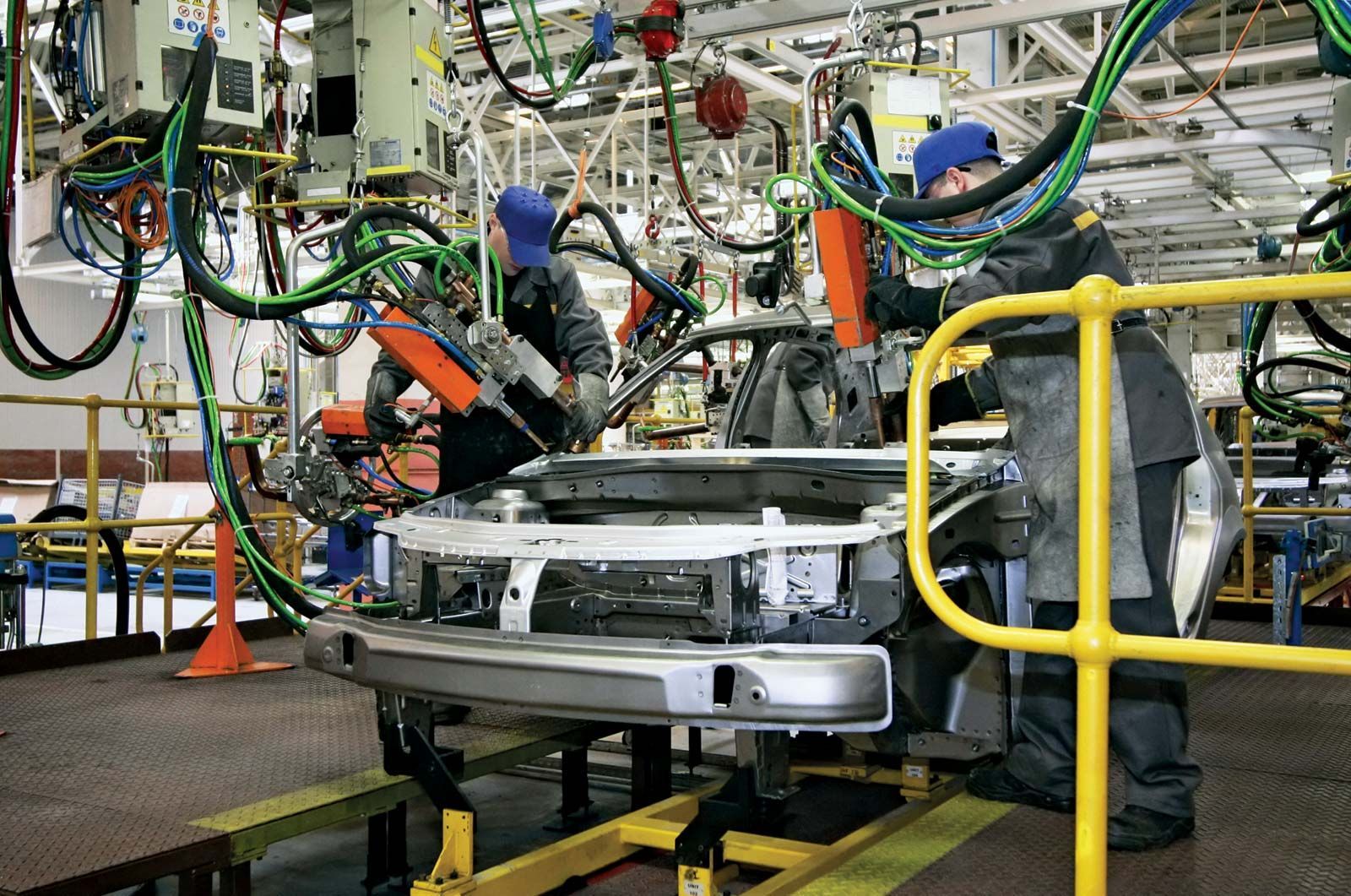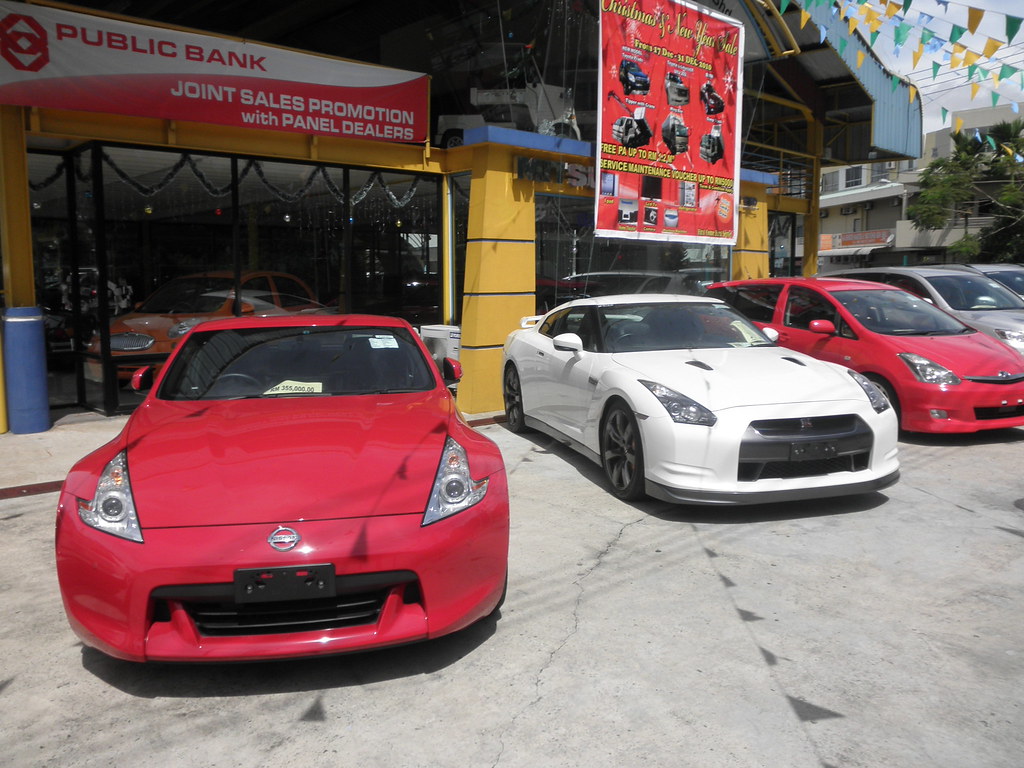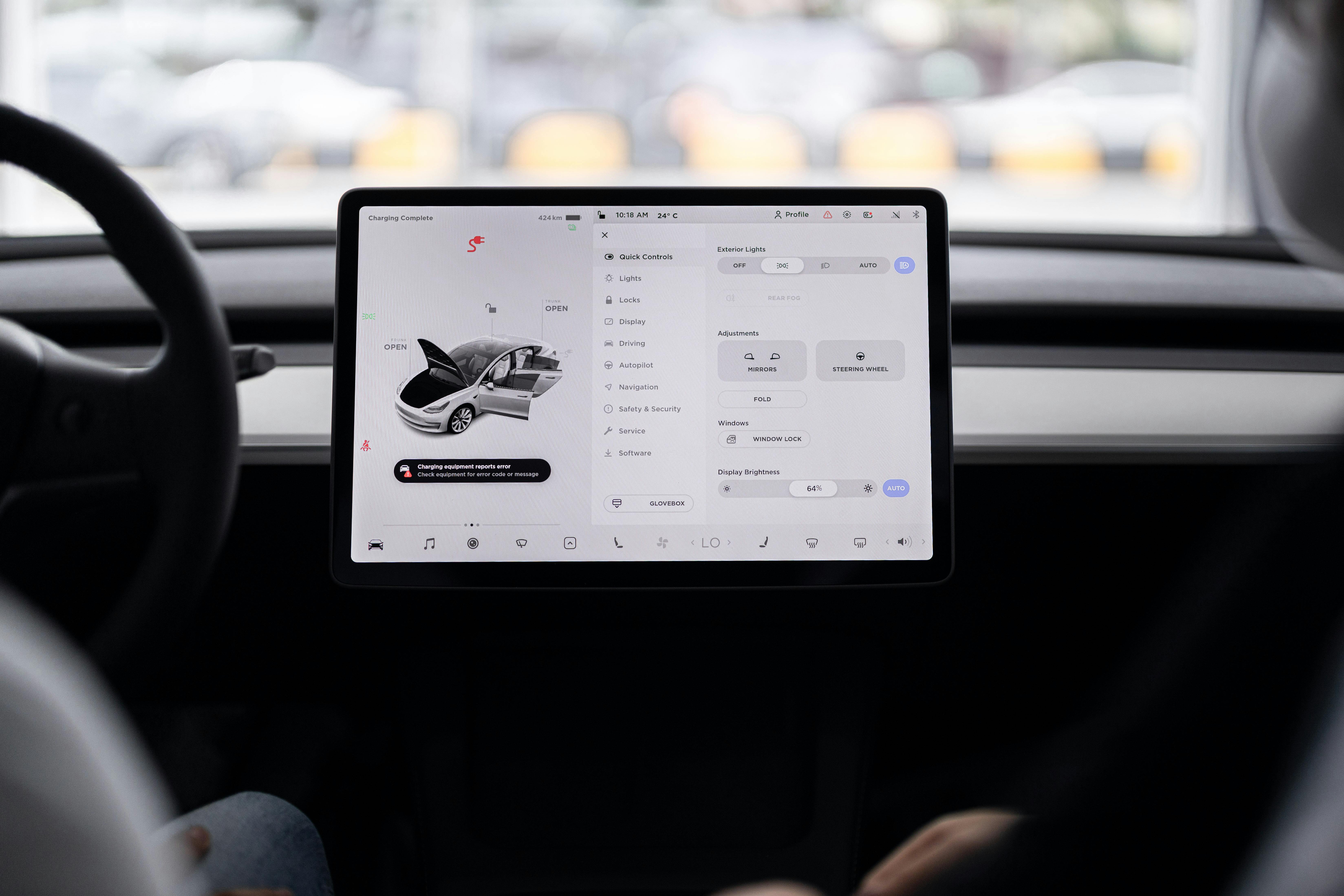
Ah, the 1980s! A decade synonymous with big hair, neon lights, and, for us automotive enthusiasts, some of the most legendary off-road vehicles ever conceived. These weren’t just modes of transport; they were statements, rugged machines built for adventure that forged an unbreakable bond with their drivers. They combined innovative engineering with rock-solid durability, making them the absolute darlings of anyone who yearned to escape the paved path and conquer the wild.
Decades may have passed, but the raw power, impressive capabilities, and timeless appeal of these 1980s off-roaders haven’t faded one bit. In fact, many still command attention, inspiring new generations of adventurers and showing modern contenders a thing or two about true grit. They represent a golden era when utility vehicles truly meant business, offering a straightforward, exhilarating driving experience that’s often missed in today’s increasingly complex machines.
If you’re anything like me, you probably don’t have a soft spot for new vehicles. Call me old-fashioned, but there’s a certain ‘fun factor’ that comes with the bouncing, the rough riding suspension, and the sheer mechanical honesty of these 80s classics that just can’t be replicated. They’re simple fun with a capital F, and they often come with luxuries like power steering, air-conditioning, and armchair-like seating – proving you don’t have to sacrifice everything for adventure. So, let’s take a thrilling ride back in time and celebrate seven of these magnificent titans that defined off-roading in the ’80s.
1. **Jeep Cherokee XJ (1984–2001)**When the 1984 Jeep Cherokee XJ burst onto the scene, it wasn’t just another SUV; it was a bona fide game-changer in the off-road world. This revolutionary vehicle dared to defy tradition by introducing a unibody construction, a significant departure from the heavier, more cumbersome body-on-frame designs prevalent at the time. The result was a lighter, yet remarkably more rigid, platform that translated directly into improved performance both on and off the trail.
Its compact design, coupled with a short wheelbase, made the XJ incredibly agile and maneuverable, allowing enthusiasts to tackle tight and challenging terrain with an ease that bigger rigs could only dream of. Add to that an excellent four-wheel-drive system and its now-iconic rugged styling, and it’s no surprise that the Cherokee XJ quickly cemented its status as a favorite among those who truly enjoy exploring rough and unforgiving landscapes. Its capability in the wilderness truly set it apart.
The XJ’s popularity, rather than diminishing, has only grown stronger through the years. Today, it remains a beloved platform, with countless enthusiasts continuing to modify and lovingly restore these vehicles for modern adventures. Whether you’re navigating gnarly rock gardens or simply enjoying a scenic dirt road, the XJ impressively holds its own, proving that a well-engineered classic can still outshine many of its more recent, high-tech off-road contenders. It’s a testament to timeless design and robust engineering.
Car Model Information: 2020 Jeep Wrangler Sport
Name: Jeep Cherokee (XJ)
Caption: 1984–1996 Jeep Cherokee 2-door
Manufacturer: American Motors Corporation,Chrysler Corporation,DaimlerChrysler
Aka: Jeep Wagoneer Limited (1984–1990),Renault Jeep Cherokee,In China:,Jeep 2500/2700,Beijing BJ2021/BJ7250,BAW Qishi,Shuanghuan SHJZH213
Production: U.S.: 1983–June 2001,China:,Beijing Jeep,1994–1997 (Shuanghuan),BAW,South America,Venezuela: 1987–2001,Argentina: 1996–2000,Egypt: 1992–2001
ModelYears: U.S.: 1984–2001
Assembly: Toledo, Ohio,Beijing,Valencia, Carabobo,Ferreyra, Córdoba,Pademangan,Cairo
Class: Compact SUV,Compact car
BodyStyle: Sport utility vehicle,4-door SUV
Related: Jeep Comanche,Jeep Grand Cherokee (ZJ),Jeep Wrangler (YJ),#XJ in China,BAW Qishi
Layout: Front-engine, rear-wheel-drive layout,rear-wheel drive
Engine: unbulleted list
Abbr: on (BAW Qishi)
Order: VM Motori,List of VM Motori engines#425 OHV
Transmission: Aisin,Aisin,Peugeot,Aisin,New Venture Gear,Chrysler,TorqueFlite#30RH,Aisin
Wheelbase: {{convert,101.4,in,mm,0,abbr=on
Length: 1987–1990: {{convert,165.3,in,mm,0,abbr=on
Width: 1987–1993, BAW Qishi: {{convert,70.5,in,mm,0,abbr=on
Height: 1987–1988 2WD: {{convert,63.4,in,mm,0,abbr=on
Weight: {{convert,3357,lb,kg,abbr=on
Predecessor: Jeep Cherokee (SJ),Jeep Wagoneer (SJ)
Successor: Jeep Liberty (KJ),Jeep Grand Cherokee (ZJ)
Designer: Dick Teague
Categories: 1980s cars, 1990s cars, 2000s cars, All-wheel-drive vehicles, All articles with dead external links
Summary: The Jeep Cherokee (XJ) is a sport utility vehicle developed by American Motors Corporation (AMC) and marketed across a single generation by Jeep in the United States from 1983 (model year 1984) through 2001, and globally through 2014. It was available in two- or four-door, five-passenger, front-engine, rear- or four-wheel drive configurations.
Sharing the name of the original, full-size Cherokee SJ model, the 1984 XJ Cherokee was Jeep’s first all-new design since the 1963 SJ Wagoneer, as well as the first American off-road vehicle built with fully integrated body-and-frame (unibody) design, and formed the mechanical basis for the Jeep Comanche (MJ) pickup truck (1986–1992).
Jeep marketed XJs as Sportwagons, a precursor to the modern sport utility vehicle (SUV) before that term was used. The XJ is credited for spawning competitors, as other automakers noticed the design cannibalizing sales from regular cars, supplanting the role of the station wagon and transforming the vehicle type “from truck to limousine in the eyes of countless suburban owners,” though GM had also launched road-biased, RWD and 4WD compact SUVs, the Chevrolet S-10 Blazer and GMC S-15 Jimmy, one year earlier, initially available in two-door form only.
The 2007 book Jeep Off-Road called the XJ a “significant link in the evolution of the 4×4.” In 2011, Kiplinger magazine selected the XJ as one of the “cars that refuse to die.” Automotive journalist Robert Cumberford, writing for Automobile, called the Jeep XJ one of the 20 greatest cars of all time — for its design, and “possibly the best SUV shape of all time, it is the paradigmatic model to which other designers have since aspired.”
Get more information about: Jeep Cherokee (XJ)
Buying a high-performing used car >>>
Brand: Jeep Model: Cherokee XJ
Price: $25,000 Mileage: 54,707 mi.
Read more about: The Unsung Heroes: 5 Forgotten Truck Models That Are Goldmines for Off-Road Builders Today
2. **Toyota Land Cruiser 70 Series (1984–Present)**Few vehicles embody sheer toughness and unwavering reliability quite like the Toyota Land Cruiser 70 Series. First launched in 1984, this legendary machine isn’t just a relic of the past; it’s an off-road staple that remarkably remains in production today, a testament to its unparalleled design and engineering. The 70 Series was explicitly engineered to conquer the most extreme conditions imaginable, from the scorching expanses of desert dunes to the treacherous slopes of mountainous terrain.
Across the globe, the 70 Series has been a key player in countless off-road expeditions, earning a reputation that is simply unmatched. Its solid axle design, a hallmark of its rugged construction, works in perfect harmony with powerful engines and an almost mythical level of durability to ensure that this vehicle continues to perform admirably, no matter the challenge. It’s the kind of vehicle you trust when failure isn’t an option, a true workhorse designed for the harshest environments.
Even with the smattering of modern upgrades it has received over the decades, the 70 Series has steadfastly retained much of its original, no-nonsense charm. This makes it an enduring favorite for those seeking an authentic, unadulterated off-road experience, free from unnecessary frills. Its legacy as one of the toughest 4x4s ever manufactured cannot be overstated; it’s a vehicle built to last, designed to conquer, and revered by adventurers worldwide.
Car Model Information: 2020 Jeep Wrangler Sport
Name: Toyota Land Cruiser (J70)
Caption: Toyota Land Cruiser (HZJ76V; second facelift, Japan)
Manufacturer: Toyota
Production: 1984–present
Assembly: unbulleted list
Class: unbulleted list
BodyStyle: unbulleted list
Layout: Front-engine, four-wheel-drive
Related: Toyota Land Cruiser Prado (J70)
Engine: unbulleted list
Transmission: unbulleted list
Wheelbase: unbulleted list
Length: unbulleted list
Abbr: on
Width: 1870 mm
Height: unbulleted list
Predecessor: Toyota Land Cruiser (J40)
ModelYears: 1985–present
Categories: 1990s cars, 2000s cars, 2010s cars, 2020s cars, All-wheel-drive vehicles
Summary: The 70 Series is a family of Toyota Land Cruiser models produced since 1984. It replaced the 25-year-old 40 Series as the off-road model of the Land Cruiser lineup, while the contemporary 60 Series developed into more comfortable luxury SUVs starting with the 80 Series. Despite major changes in styling and numerous technological updates, the 70 Series was designed to retain the off-road capabilities and durability associated with the 40 Series.
Get more information about: Toyota Land Cruiser (J70)
Buying a high-performing used car >>>
Brand: Toyota Model: Land Cruiser 70 Series
Price: $25,000 Mileage: 54,707 mi.

3. **Ford Bronco II (1984–1990)**The Ford Bronco II, produced between 1984 and 1990, proved that great things often come in smaller packages. This compact off-road SUV was a true punch-packer, delivering impressive capabilities despite its more diminutive stature. It quickly carved out a significant niche for itself, becoming a popular choice for adventure seekers throughout the ’80s who wanted something agile yet robust.
Equipped with a powerful engine for its class and a capable four-wheel-drive system, the Bronco II stood as a formidable competitor in the compact SUV segment. Its sturdy build and reliable performance ensured that it could handle the rough and tumble of unpaved roads and light trails with confidence. For many, it represented the perfect balance of daily usability and weekend adventure potential.
While production of the Bronco II ceased many years ago, its legacy continues to resonate, subtly influencing modern off-road designs and inspiring a loyal following. Today, the Bronco II holds a special place in the hearts of off-roading enthusiasts, particularly those who cherish its vintage charm and straightforward mechanical simplicity. Restored models are frequently spotted on recreational trails and even in vintage off-road competitions, a clear sign of its enduring appeal.
Car Model Information: 2020 Jeep Wrangler Sport
Name: Ford Bronco II
Caption: 1983–1988 Ford Bronco II XLT
Manufacturer: Ford Motor Company
ModelYears: 1984–1990
Production: January 1983 – January 1990
Assembly: Louisville, Kentucky
Class: Compact SUV
Related: Ford Ranger (Americas)
Layout: Front-engine, rear-wheel-drive layout,rear-wheel drive
Engine: Ford Cologne V6 engine#2.8,Ford Cologne V6 engine#2.9,Mitsubishi Motors
Transmission: Manual transmission,Mazda,Mazda,Mazda,Mitsubishi Motors,Mitsubishi Motors,Automatic transmission,Ford C4 transmission#C5,Ford C3 transmission#A4LD
Wheelbase: 94.0 in
Abbr: on
Length: 1983–1988: {{convert,158.3,in,mm,0,abbr=on
Width: 68.0 in
Height: 1983–1988: {{convert,68.2,in,mm,0,abbr=on
Successor: Ford Explorer#Ford Explorer Sport (1991–2003)
BodyStyle: 3-door wagon
Categories: 1990s cars, All-wheel-drive vehicles, Articles with short description, CS1 French-language sources (fr), Cars discontinued in 1990
Summary: The Ford Bronco II is a compact sport utility vehicle (SUV) that was manufactured by the American manufacturer Ford. Closely matching the first-generation Ford Bronco in size, the Bronco II was sold for the 1984 to 1990 model years, alongside the third and fourth generations of Ford’s full-size Bronco. Derived from the Ford Ranger compact pickup truck, the Bronco II was produced in a single generation as a three-door wagon only, competing against the three-door version of the Jeep Cherokee introduced the same year, and the compact Chevrolet S-10 Blazer and GMC S-15 Jimmy which GM had launched as smaller, similar-named SUVs alongside their full-size Blazer and Jimmy a year prior.
For the 1991 model year, Ford replaced the Bronco II with a larger but still Ranger-derived SUV, the mid-size Explorer. Alongside a three-door wagon, a five-door version was also built to better meet consumer demands. Ford’s next compact SUV was the 2001 Escape, available only as a five-door. Ford did not release another three-door SUV until the 2021 mid-size Bronco.
The Bronco II was assembled alongside the Ford Ranger in the Louisville Assembly Plant in Louisville, Kentucky from January 1983 to January 1990.
Get more information about: Ford Bronco II
Buying a high-performing used car >>>
Brand: Ford Model: Bronco II
Price: $25,000 Mileage: 54,707 mi.
Read more about: Seriously Where Did They Go? 12 Iconic SUVs That Vanished From Our Highways: A MotorTrend Retrospective on Automotive History
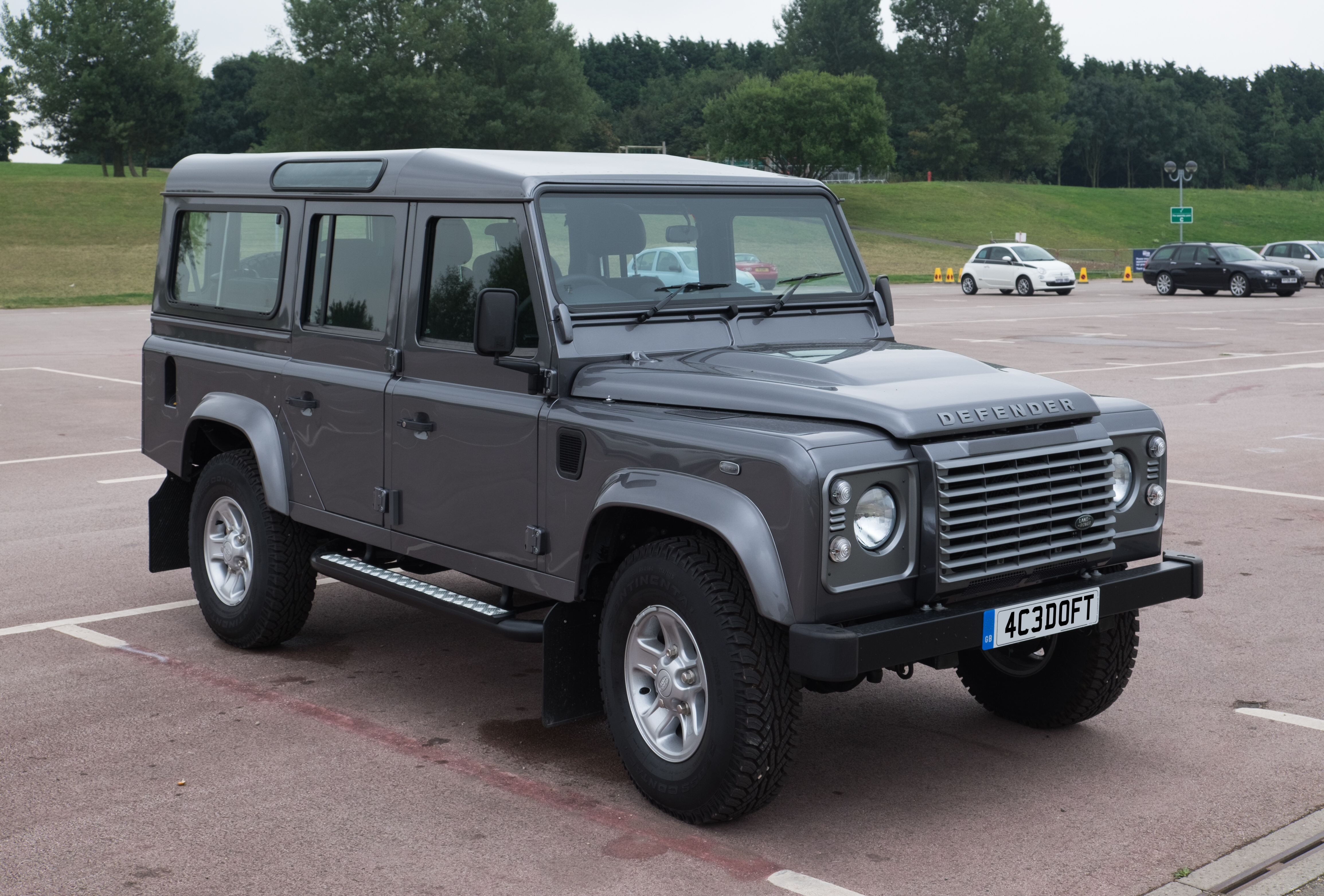
4. **Land Rover 110 (1983–2016)**When the Land Rover 110 hit the market in 1983, it immediately became more than just a vehicle; it was an emblem. A potent symbol of toughness seamlessly combined with an understated sense of luxury. Designed from the ground up to conquer the most challenging terrains on Earth, the Land Rover 110 featured a distinctively long wheelbase that provided superior stability and exceptional traction, crucial attributes for navigating treacherous landscapes.
Its remarkable versatility quickly earned it favor, becoming a firm choice for both rigorous military applications and discerning civilian use. Whether traversing rocky trails, slogging through deep muddy roads, or navigating remote wilderness, the Land Rover 110 was praised universally for its unyielding ability to handle virtually any obstacle thrown in its path. It truly lived up to its reputation as a go-anywhere machine, embodying the spirit of exploration and resilience.
Even in the present day, Land Rovers from the 1980s, particularly the iconic 110, remain highly coveted within the passionate off-roading community. Their unique blend of uncompromising durability, dependable performance, and timeless, utilitarian style ensures their status as enduring classics. These vehicles continue to stand tall and proud on rugged terrain, not merely as remnants of a bygone era, but as living legends still capable of extraordinary feats.

5. **Isuzu Trooper (1981–2002)**The Isuzu Trooper, introduced in the early 1980s, swiftly emerged as a standout SUV, earning widespread acclaim for its robust design and unwavering reliability. This off-roader was meticulously engineered with a dual purpose in mind: to confidently tackle the most formidable rough terrain while simultaneously offering the kind of comfort and practicality expected from a family vehicle. It was a true pioneer in bridging the gap between hardcore utility and everyday usability.
Equipped with highly capable four-wheel-drive systems and a tough, well-engineered suspension, the Trooper possessed the inherent ability to handle virtually any surface, from dusty dirt roads to challenging rocky paths. Its generous and thoughtfully designed interior further enhanced its appeal, making it a particularly popular choice for extended off-road adventures and family road trips where space and comfort were paramount.
Today, the Isuzu Trooper maintains its revered status as a true classic, with a surprising number still actively traversing roads and proudly participating in off-road club events. Its legendary durability and consistently dependable performance ensure its continued relevance, even in a world dominated by ever more technologically advanced modern off-roaders. The Trooper is a testament to honest engineering and practical adventure, a vehicle that simply keeps on going.
Car Model Information: 1996 Isuzu Trooper LS
Name: Isuzu Trooper
Caption: Second generation Isuzu Trooper (United States)
Manufacturer: Isuzu
Production: 1981–2002
Assembly: Fujisawa, Kanagawa
Class: Full-size car,SUV
Layout: front engine, selectable four-wheel-drive
Successor: ubl
Categories: 1990s cars, 2000s cars, All-wheel-drive vehicles, All articles needing additional references, All articles with unsourced statements
Summary: The Isuzu Trooper is a full-size SUV manufactured and marketed by Isuzu between September 1981 and September 2002 over two generations, the first, produced between 1981 and 1991; and the second (UBS) produced between 1991 and 2002, the latter with a mid-cycle refresh in 1998. In its earliest iterations, the Trooper was based on the company’s first generation Isuzu Faster/Chevrolet LUV pickup.
Marketed in the Japanese domestic market, as the Isuzu Bighorn, Isuzu marketed it internationally primarily as the Trooper, and in other markets as the Acura SLX (USA), Chevrolet Trooper, Subaru Bighorn, SsangYong Korando Family, Honda Horizon, Opel Monterey, Vauxhall Monterey, Holden Jackaroo, and Holden Monterey.
In the United States, for the first generation, which was initially solely offered with two doors, Isuzu was required to comply with the 25% U.S. Chicken Tax on two-door trucks. Prior to its formal introduction Paul Geiger, product-development manager at American Isuzu Motors, noted the Roman numeral “II” designated the truck version (with the rear seat as a mandatory $300 option) and “I” indicating the passenger version with a rear seat included along with certain other features. Isuzu thus marketed the first generation two-door as the Trooper II, and when introducing the four-door retained the Trooper II nameplate. Isuzu never formally marketed a Trooper I, and Car & Driver later inferred the company had changed their mind about the suffix before the SUV went on sale.
Isuzu offered the Trooper initially with four-cylinder motor, four-speed manual transmission, and part-time four-wheel drive, subsequently adding amenities and luxuries, including optional air-conditioning, power windows, and a more powerful V6 engine. The second generation was available with two-wheel- or four-wheel drive.
Competitors included the Toyota Hilux Surf, Mitsubishi Pajero, and Nissan Terrano.
Get more information about: Isuzu Trooper
Buying a high-performing used car >>>
Brand: Isuzu Model: Trooper
Price: $10,000 Mileage: 82,500 mi.
6. **Nissan Patrol (1980s–Present)**The Nissan Patrol boasts a long and illustrious history, stretching back to the 1950s, but it was undoubtedly during the 1980s that this formidable vehicle truly hit its stride and experienced some of its most defining years. By this transformative decade, the Patrol had evolved significantly, becoming a highly capable off-road machine, boasting advanced technology for its time and a formidable amount of power residing under its hood. It was a force to be reckoned with on any terrain.
Engineered with an unwavering focus on extreme conditions, the Patrol was designed to excel whether traversing vast, shifting sand dunes, plowing through deep snow, or carefully navigating treacherous rocky paths. This exceptional versatility and robust construction firmly established it as a top choice for serious adventurers and professional users around the globe. It was a vehicle that inspired confidence, no matter how daunting the environment.
The Nissan Patrol continues to enjoy an incredibly strong and passionate following, particularly in markets like Australia, where off-roading isn’t just a hobby but a deeply ingrained way of life. Its enduring legacy serves as undeniable proof that the Nissan Patrol’s off-road performance was truly ahead of its time, a pioneering spirit that continues to impress and inspire enthusiasm to this very day. It’s an icon of global off-road prowess.
Car Model Information: 2005 Nissan Pathfinder LE
Manufacturer: Nissan
Aka: Nissan Armada
Production: 1951–present
Class: Off-road vehicle,Full-size,SUV
Layout: Front-engine, four-wheel-drive layout
Categories: 1960s cars, 1970s cars, 1980s cars, 1990s cars, 2000s cars
Summary: The Nissan Patrol (Japanese: 日産・パトロール, Hepburn: Nissan Patorōru) is a series of off-road vehicles and full-size SUVs manufactured by Nissan in Japan since 1951 and sold throughout the world. It is Nissan’s longest running series of models.
The Patrol has been available as either a short-wheelbase (SWB) three-door or a long-wheelbase (LWB) five-door chassis since 1951. The LWB version has been offered in pickup truck and cab chassis variants. Between 1988 and 1994, Ford Australia marketed the Patrol as the Ford Maverick. In some European countries, such as Spain, the Patrol was marketed by Ebro as the Ebro Patrol. In 1980 in Japan, it was rebadged and alternately sold at Nissan Prince Store locations as the Nissan Safari.
The Patrol has traditionally competed with the Toyota Land Cruiser in most world markets and is available in Australia, Central and South America, South Africa, parts of Southeast Asia, and Western Europe, as well as Iran and the Middle East. For the 2011 model year, it was made available in North America as the upscale Infiniti QX56 (later renamed as Infiniti QX80), the first time that a Patrol-based vehicle had been sold in North America since 1969, and for the 2017 model year, it would be offered in that market as the Nissan Armada.
Get more information about: Nissan Patrol
Buying a high-performing used car >>>
Brand: Nissan Model: Patrol
Price: $5,495 Mileage: 163,091 mi.

7. **Suzuki Samurai (1985–1995)**When the Suzuki Samurai officially launched in the U.S. in 1985, it arrived as a delightful surprise: a compact vehicle that was an absolute powerhouse on the trails. Don’t let its modest dimensions fool you; the Samurai’s lightweight design, small physical footprint, and exceptional 4×4 capabilities conspired to create an off-road vehicle par excellence. It was specifically engineered for those who relished the challenge of conquering tight and technically demanding trails where larger vehicles simply couldn’t tread.
Despite its relatively modest engine size, the Samurai truly shone in the wilderness, earning the affectionate title of a beloved 4×4. Its inherent nimbleness and incredible agility allowed it to dance through obstacles, making light work of terrain that would bog down bulkier machines. It taught drivers that finesse and efficiency could be just as, if not more, effective than sheer brute force when navigating the great outdoors.
Even today, the Suzuki Samurai continues to revel in its popularity within the dedicated off-road community, especially among enthusiasts who appreciate smaller, more agile vehicles for their unique advantages. Its enduring appeal is rooted deeply in its remarkable versatility and the distinctive, thrilling off-road adventures it consistently enables. The Samurai wasn’t just a vehicle; it was an invitation to explore, an enduring symbol of compact capability.
Now that we’ve journeyed through some of the defining off-road legends of the early 80s, it’s time to shift gears and explore another spectacular lineup that cemented the decade’s reputation for rugged, dependable adventure machines. These next eight titans continued to push the boundaries of capability, proving that true grit and intelligent design are indeed timeless. Get ready to dive deeper into the vehicles that truly ruled the trails and captured the hearts of adventurers worldwide.

8. **Chevrolet Blazer K5 (1980–1994)**Few vehicles embody the sheer, unadulterated American muscle of 1980s off-roading quite like the Chevrolet Blazer K5. This genuine classic quickly became and remains a crowd favorite among enthusiasts. Its robust body-on-frame construction was the backbone of its incredible strength, designed from the ground up to conquer the most challenging conditions imaginable.
Under its hood, the K5 often roared with powerful V8 engine options, delivering the raw capability needed to dominate harsh off-road terrains. Whether tackling tricky rock gardens or blasting through thick mud, the Blazer K5 handled it all with authoritative confidence. It was truly built for battle, always ready for the next adventure.
Decades on, the Blazer K5 continues to command respect and admiration. It remains a popular classic, with countless owners passionately restoring them to their original glory or customizing them for modern adventures. The K5’s enduring legacy as an off-road legend shines brightly, reminding us all what a true American icon looks like.
Car Model Information: 2020 Jeep Wrangler Sport
Name: Chevrolet K5 Blazer,GMC Jimmy
Manufacturer: General Motors
ModelYears: 1969–1994
Assembly: Flint, Michigan,Janesville, Wisconsin
Class: Full-size,SUV
BodyStyle: SUV
Layout: Front-engine, rear-wheel-drive layout,rear-wheel drive
Successor: Chevrolet Tahoe
Related: Chevrolet Suburban,Chevrolet C/K
Caption: 1979 Chevrolet K5 Blazer Cheyenne
Categories: 1970s cars, 1980s cars, 1990s cars, All-wheel-drive vehicles, All articles with unsourced statements
Summary: The Chevrolet K5 Blazer is a full-size sport-utility vehicle (SUV) that was marketed by Chevrolet from the 1969 to 1994 model years. A variant of the C/K truck line, the K5 Blazer is a shortened version of the half-ton pickup line. For its first two generations, the model line was a half-cab pickup truck fitted with a removable rear top (effectively making it a three-door station wagon); the final generation was fitted with permanent rear bodywork. Initially offered solely as a 4×4, the K5 Blazer was also marketed with a rear-wheel drive configuration.
Alongside the longer-wheelbase Chevrolet/GMC Suburban wagon-style SUV (offered with three rows of seating and second-row doors), the K5 Blazer was marketed by GMC from 1970 to 1991 as the GMC Jimmy (reflecting a shorthand nickname for the brand). Though the K5 prefix was used on Chevrolet badging until 1988, GM never internally referred the Blazer/Jimmy as such. Following the 1983 release of the S-Series Blazer/Jimmy, to avoid market confusion, GM officially changed the model lines to “Chevrolet Full-Size Blazer” and “GMC K-Jimmy” (after 1986, V-Jimmy), though they are often unofficially still addressed as “K5” to avoid confusion.
For 1992, General Motors redesigned its entire full-size SUV lineup, with GMC renaming the Jimmy as the GMC Yukon. The full-size Blazer was replaced for 1995, as the Chevrolet Tahoe inaugurated a shorter-wheelbase variant of the Suburban. Currently, GM markets the Tahoe and Yukon alongside the Cadillac Escalade, and later resurrected the “Blazer” name for a midsize crossover SUV while Kia now uses the “K5” name for an unrelated midsize sedan.
Get more information about: Chevrolet K5 Blazer
Buying a high-performing used car >>>
Brand: Chevrolet Model: Blazer K5
Price: $25,000 Mileage: 54,707 mi.
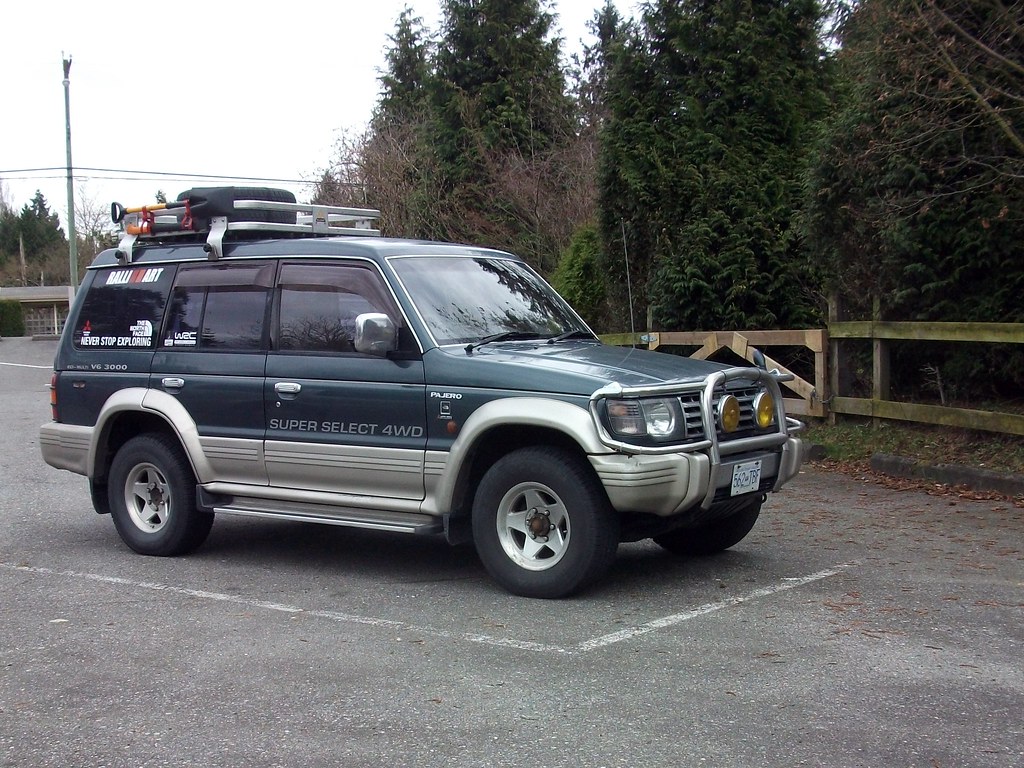
9. **Mitsubishi Pajero (1982–Present)**The Mitsubishi Pajero, first rolling off production lines in 1982, didn’t just enter the world of off-roading; it quickly became a dominant force. Renowned for its spectacular victories in the grueling Dakar Rally, this vehicle is a testament to engineering excellence under extreme pressure. Its consistent success, claiming a full dozen victories since 1985, cemented its formidable reputation.
Equipped with advanced four-wheel-drive systems and an incredibly tough build, the Pajero was meticulously designed to conquer the most challenging terrains on Earth. The Pajero Evolution, with its distinct boxed fender flares and potent turbocharged engine options, truly embarrassed the competition in desert racing for over a decade. It was a machine built for global domination.
Even with the arrival of newer models, the spirit of the 1980s Pajero continues to captivate fans. Its rugged nature and unwavering endurance keep it firmly in the spotlight for those who crave genuine excitement and reliability. Notably, it sported independent front suspension for a comfortable ride and a live rear axle to efficiently put power to the ground – making it a trailblazer that offered a comfortable, Japan-built off-road experience to the masses.
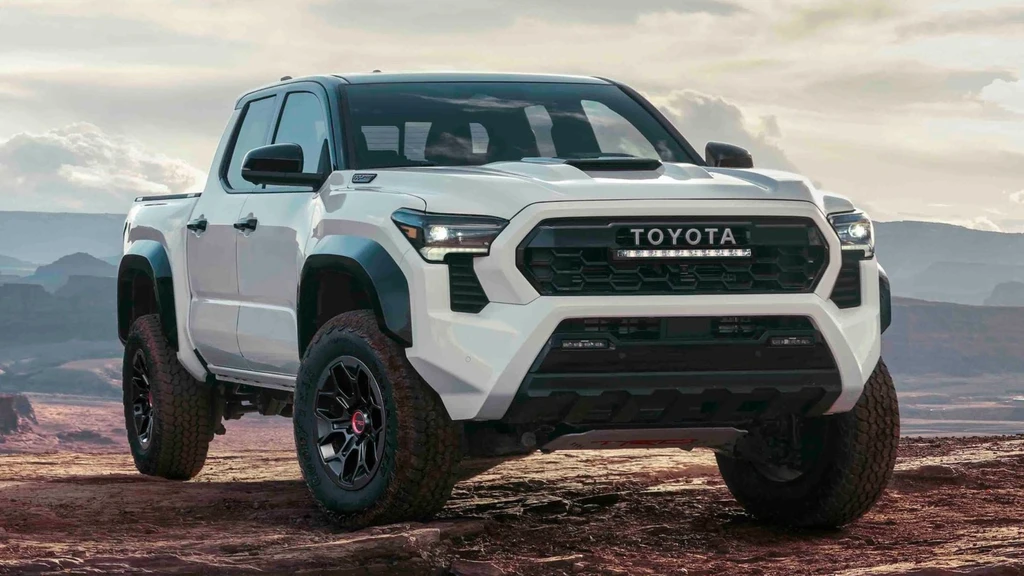
10. **Toyota 4Runner (1984–Present)**When the Toyota 4Runner made its debut in 1984, it quickly became a household name synonymous with off-road adventure. Its roots trace back to a brilliant, simple idea: grafting a fiberglass cover over the back of a Hilux pickup and adding seats. From such practical beginnings, a legend was born, laying the foundation for a prized off-road companion adored by hundreds of thousands every year.
Built with rugged construction, robust solid axles, and truly exceptional four-wheel-drive capabilities, the 4Runner has steadfastly maintained its position as one of the best off-road vehicles available. Early 1980s models were cherished for their uncanny ability to expertly navigate tough trails while offering a surprisingly comfortable ride for everyday use. It was the perfect blend of utilitarian grit and daily practicality.
Today, the 4Runner’s legacy continues to soar as one of the most respected off-roaders on the planet. Its enthusiastic fan base remains dedicated, consistently maintaining and modifying their classic ’80s models. The 4Runner’s consistent, impressive performance and remarkable versatility make it an absolute standout, a true testament to Toyota’s enduring engineering prowess and an adventurous spirit that just won’t quit.
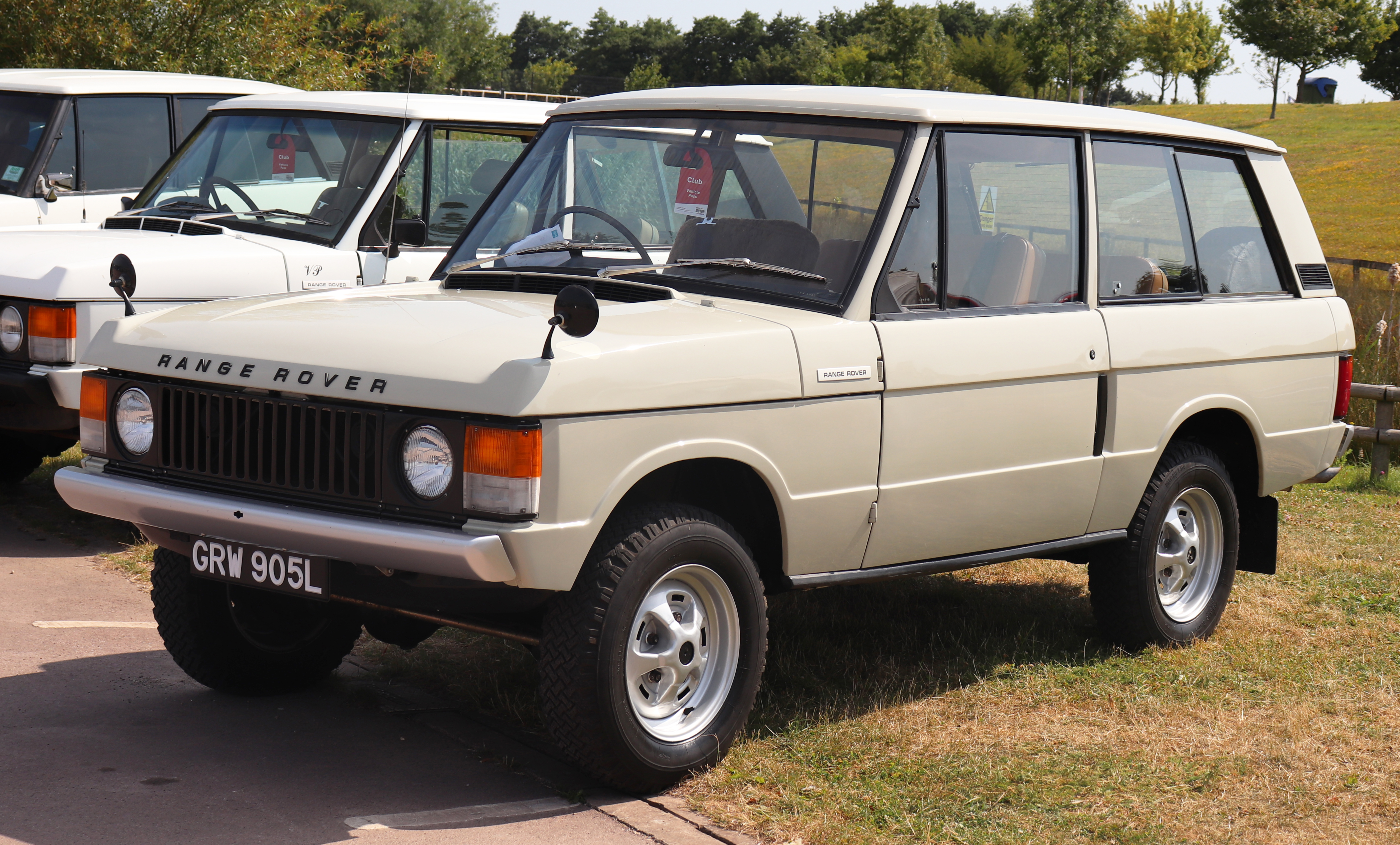
11. **Range Rover Classic**The original Range Rover made an undeniable splash in Australia by 1972, but by 1986, it truly hit its stride, evolving into something even more remarkable. Four-door models with automatic transmissions and electronic fuel injection became available, cementing its status as a vehicle truly ahead of its time. Australian sales even outpaced mother England by 1985, a clear sign of its universal appeal.
These vehicles were so beloved for a compelling combination of comfortable 4×4 experience with exceptional capability. Fitted with a throaty V8 engine, flexy coil springs on all four corners, and disc brakes all around, the Classic was a dream on paper. These features, especially the advanced coil springs, were revolutionary for a utility vehicle of its time, providing superior ride quality and articulation.
While early Range Rovers did earn a reputation for unreliability, they still represent a tremendous platform for a project vehicle. Despite these quirks, they offer an incredibly fun, albeit sometimes demanding, toy for the mechanically minded. Their timeless design and inherent capability mean that with dedication, these V8-powered icons can still offer an immensely rewarding and undeniably classic off-road experience.
Car Model Information: 2025 Alfa Romeo Stelvio Sprint
Sp: uk
Name: Range Rover “Classic”
Caption: 1973 Range Rover 3.5
Manufacturer: British Leyland,Land Rover Ltd.
Production: 1970–1996,326,070 produced
Assembly: Solihull
Successor: Range Rover (P38A)
Class: off-road vehicle
BodyStyle: off-road vehicle
Engine: ubl
Transmission: Manual transmission
Wheelbase: 100.0 in
Abbr: on (1980 onwards)
Length: 175 in
Width: 70.1 in
Height: 70.9 in
Related: Land Rover Discovery
Designer: Charles Spencer King
Categories: 1980s cars, 1990s cars, All-wheel-drive vehicles, All Wikipedia articles written in British English, All articles needing additional references
Summary: The Range Rover is a 4×4, mid-size off-road vehicle series produced from 1970 to 1996 – initially by the Rover (later Land Rover) division of British Leyland, and latterly by the Rover Group.
The first generation of vehicles produced under the Range Rover name, it was built as a two-door model for its first 11 years, until a four-door also became available in 1981. The Range Rover then successfully moved upmarket during the 1980s, and remarkably debuted in the U.S. as a 17-year old model at the 1987 Los Angeles Auto Show.
Availability of the two-door version was restricted from 1984, but it remained in production for some markets until 1994, when the second generation was launched. From that moment, Land Rover rebranded the original model under the term Range Rover Classic, to distinguish it from its new P38A successor, when the two were briefly built alongside, and applied the name retrospectively to all first-generation Range Rovers.
Although formally superseded by the second generation Range Rover, starting in 1994 – both the successor and the more affordable first and second series of the Land Rover Discovery were heavily based on the original Range Rover’s chassis, drive-train and body-structure, which in essence lived on until the third generation Discovery arrived, and its mechanical blood-line ended with the replacement of the Mark 2 Discovery after 2004.
In early 2020, the 26-year production run of the original Range Rover was counted as the twenty-seventh most long-lived single generation car in history by Autocar magazine.”
Get more information about: Range Rover Classic
Buying a high-performing used car >>>
Brand: Range Rover Model: Classic
Price: $54,000 Mileage: 889 mi.
Read more about: Behind the Mic: 8 Major Stars Who Steered Clear of Iconic Charity Singles (and Why!)
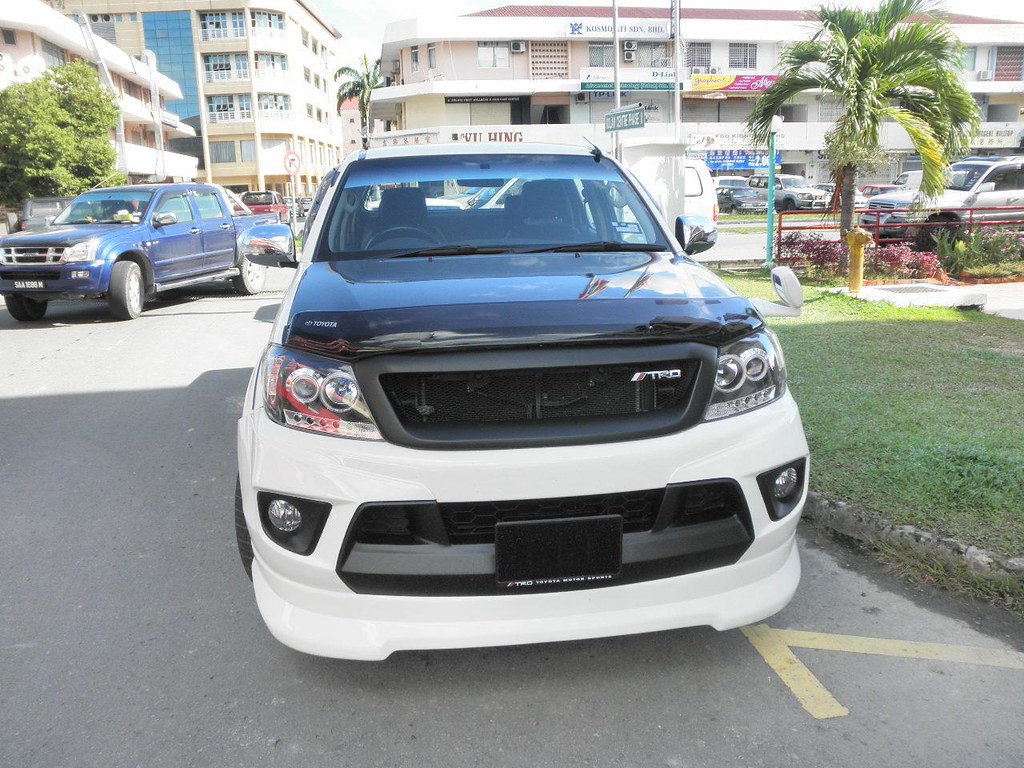
12. **Toyota Hilux**Ah, the mighty, virtually unbreakable HiLux! This legendary 4×4 classic from the 80s remains, to this very day, one of the most popular vehicles sold across the entire new car market, globally. The reason is simple: they just plain *work*. Toyota engineered a machine that consistently delivers on the toughest tasks imaginable, earning its fabled reputation for sheer indestructibility.
Early models had their quirks – a tad slow, and minor issues like rust or weak(ish) diff centers might emerge if abused. Yet, the HiLux harbored a magical habit of always getting you home, no matter the predicament. For that unwavering loyalty and dependability, we simply have to bless the old Luxy.
The 1980s were pivotal for the Hilux, seeing the introduction of the 4Y petrol engine, paving the way for the legendary 22R 2.4 petrol motor, and the robust 2L 2.4 diesel motor. A major benefit was its impressive factory-built ground clearance and the sheer magnitude of available modifications. It’s a platform begging for customization; a well-sorted live-axle HiLux at full flex is, frankly, a thing of beauty.
Read more about: Beyond 100,000 Miles: Unpacking the Longevity of 9 SUVs That Defy Early Component Failure

13. **Suzuki Sierra**Hands up if your formative off-road adventures began bouncing around in a Suzuki Sierra! For many, those early days were filled with grinning from ear to ear as an LJ50 effortlessly scaled mountains or floated over muddy quagmires. This, my friends, is the quintessential spirit of these 4×4 classics from the 80s – the pure, unadulterated fun factor.
These diminutive giants are, in essence, like motorbikes with four wheels, offering an exhilaratingly direct and engaging driving experience. They are about as easy to work on and as cheap to run as a postie bike, making them incredibly accessible entry points into the off-road world. Their mechanical simplicity and light footprint allowed for adventures larger vehicles couldn’t tackle.
For more refinement, a post-1988 model offered wide-track axles, increasing stability and optimizing gearing for lower revs on-road. With hard-top, soft-top, LWB, SWB, and even ute variants, there was a Sierra for almost any purpose. They ride rough and are slow, but if you embrace those quirks, you’ll be welcomed into a passionate fraternity of ‘Zookers,’ a community you’ll never want to leave.
Read more about: Unearthing JDM Gems: 10 Forgotten Japanese Coupes and Roadsters Primed for Tuner Glory
14. **Toyota Landcruiser 60 Series**Can leaf springs actually be comfortable? For many, the answer might be ‘no way.’ But the Toyota Landcruiser 60 Series emphatically proved that, yes, they absolutely can! This iconic model, along with its later 62 Series, took all the legendary attributes of the revered 40 Series and amplified them. It was an evolution that made an already great vehicle even better.
Now, the Achilles’ heel of the 60 Series was its penchant for rust; they just absolutely loved the stuff. If you unearth a seemingly rust-free example, it likely means extensive surgery was performed. Always bring a magnet on inspection, meticulously checking roof gutters, turrets, and rear wheel arches.
Beyond that caveat, these 1980s 4×4 classics boast a driveline that is tough as nails. Buyers had their pick of reliable petrol or diesel engines, manual or automatic gearboxes. For those in the know, the venerable 12HT factory turbo-diesel engine was available in the final years – as rare and coveted as a rust-free 60 Series. Find both, and make that magnificent machine yours!
Car Model Information: 2025 Alfa Romeo Stelvio Sprint
Name: Toyota Land Cruiser
Caption: 2021 Toyota Land Cruiser ZX (VJA300, Colombia)
Manufacturer: Toyota
Production: 1951–present
Class: unbulleted list
Layout: Front-engine, four-wheel-drive
Categories: 1960s cars, 1970s cars, 1980s cars, 1990s cars, 2000s cars
Summary: The Toyota Land Cruiser (Japanese: トヨタ・ランドクルーザー, Hepburn: Toyota Rando-Kurūzā), also sometimes spelt as LandCruiser, is a series of four-wheel drive vehicles produced by the Japanese automobile manufacturer Toyota. It is Toyota’s longest running series of models. As of 2019, the sales of the Land Cruiser totalled more than 10 million units worldwide.
Production of the first generation of the Land Cruiser began in 1951. The Land Cruiser has been produced in convertible, hardtop, station wagon and cab chassis body styles. The Land Cruiser’s reliability and longevity have led to huge popularity, especially in Australia, where it is the best-selling body-on-frame, four-wheel drive vehicle. Toyota also extensively tests the Land Cruiser in the Australian outback – considered to be one of the toughest operating environments in both temperature and terrain. In Japan, the Land Cruiser was once exclusive to Toyota Japanese dealerships called Toyota Store.
Since 1990, the smaller variation of the Land Cruiser has been marketed as the Land Cruiser Prado. Described as a ‘light-duty’ version of the Land Cruiser by Toyota, it features a different design compared to the full-size model and, up until 2023, it remains the only comfort-oriented Land Cruiser available with a short-wheelbase 3-door version.
In 2025, an even smaller variation called Land Cruiser FJ was introduced. It is built on the IMV platform shared with the Hilux.
As of 2023, the full-size Land Cruiser was available in many markets. Exceptions include the United States (since 2021 where the smaller Land Cruiser Prado has been sold under the Land Cruiser name since 2024), Canada (since 1996), Malaysia (which receives the Lexus LX instead), Hong Kong, Macau, South Korea, Brazil, and most of Europe. In Europe, the only countries where the full-size Land Cruiser is officially sold are Gibraltar, Moldova, Russia, Belarus, and Ukraine. The Land Cruiser is hugely popular in the Middle East, Russia, Australia, India, Bangladesh, Pakistan, New Caledonia, and Africa. It is used by farmers, the construction industry, non-governmental and humanitarian organizations, the United Nations, national armies (often the pickup version), and irregular armed groups who turn them into “technicals” by mounting machine guns in the rear. In August 2019, cumulative global sales of the Land Cruiser family surpassed 10 million units.
Get more information about: Toyota Land Cruiser
Buying a high-performing used car >>>
Brand: Toyota Model: Landcruiser 60 Series
Price: $54,000 Mileage: 889 mi.
Read more about: Beyond 100,000 Miles: Unpacking the Longevity of 9 SUVs That Defy Early Component Failure

15. **Nissan Patrol MK**Alright, calm down all you GQ Patrol owners – just hear us out! While the GQ Patrol, hitting Australian shores from 1988, was undeniably a bloody good 4×4, the MK Patrol, the very last of the M series, actually managed to do some things even better. It’s an elder statesman deserving of immense respect, often overlooked but truly foundational.
Firstly, engine options were noteworthy: the L28 petrol with race heritage, or the robust SD33 3.3L six-cylinder diesel. The real magic came with the SD33T turbocharged engine – a marvel of its time. The SWB version featured a removable rear roof, perfect for open-air adventure or hunting, showcasing its versatility.
The MK Patrol also shaped the design for the GQ, even sharing a few panels. It’s a shame the MQ and MK Patrols seem forgotten as classics, especially since they can be acquired for the price of a hot meal. The SD33T stands out as one of the finest production factory turbo-diesel engines ever crafted. Long live the truly exceptional MK!
Car Model Information: 2005 Nissan Pathfinder LE
Manufacturer: Nissan
Aka: Nissan Armada
Production: 1951–present
Class: Off-road vehicle,Full-size,SUV
Layout: Front-engine, four-wheel-drive layout
Categories: 1960s cars, 1970s cars, 1980s cars, 1990s cars, 2000s cars
Summary: The Nissan Patrol (Japanese: 日産・パトロール, Hepburn: Nissan Patorōru) is a series of off-road vehicles and full-size SUVs manufactured by Nissan in Japan since 1951 and sold throughout the world. It is Nissan’s longest running series of models.
The Patrol has been available as either a short-wheelbase (SWB) three-door or a long-wheelbase (LWB) five-door chassis since 1951. The LWB version has been offered in pickup truck and cab chassis variants. Between 1988 and 1994, Ford Australia marketed the Patrol as the Ford Maverick. In some European countries, such as Spain, the Patrol was marketed by Ebro as the Ebro Patrol. In 1980 in Japan, it was rebadged and alternately sold at Nissan Prince Store locations as the Nissan Safari.
The Patrol has traditionally competed with the Toyota Land Cruiser in most world markets and is available in Australia, Central and South America, South Africa, parts of Southeast Asia, and Western Europe, as well as Iran and the Middle East. For the 2011 model year, it was made available in North America as the upscale Infiniti QX56 (later renamed as Infiniti QX80), the first time that a Patrol-based vehicle had been sold in North America since 1969, and for the 2017 model year, it would be offered in that market as the Nissan Armada.
Get more information about: Nissan Patrol
Buying a high-performing used car >>>
Brand: Nissan Model: Patrol
Price: $5,495 Mileage: 163,091 mi.
Read more about: Beyond the Showroom: Unpacking the Fierce Loyalty of Car Enthusiasts to Their Beloved Brands and Models
As we close the book on this thrilling journey through the ’80s, it’s clear that these utility vehicles were more than just metal, rubber, and glass; they were vessels of freedom, catalysts for adventure, and enduring symbols of a simpler, more mechanically honest time. They championed a raw, visceral driving experience, where the connection between driver and machine felt profound, and every bump in the trail was a shared story. These legends remind us that true toughness, robust engineering, and an unyielding spirit for exploration never go out of style. They are not merely relics of a bygone era, but vibrant, roaring testaments to a golden age of off-roading, still inspiring us to choose the bouncing, the rugged, and the unpaved path. So go on, find your own 80s titan, and rediscover the joyous fun factor that started it all!

